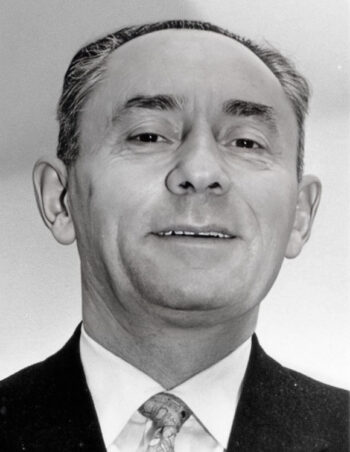Buki, Milton

Milton Buki (or Michal Majlech) was a former Auschwitz inmate. He signed two English-language depositions on 4 and 7 January 1945 while in Linz, Austria. In the first deposition, which is geared toward framing SS man Josef Erber, he did not mention any homicidal gassings. His second statement is geared toward framing Gestapo man Maximilian Grabner as one of the persons supervising homicidal gassings at Auschwitz. In it, he claimed to have been a member of the inmate unit dragging corpses out of the gas chamber (the so-called Sonderkommando, although Buki doesn’t mention this term) from his arrival at Birkenau in 1942 until late 1944, when gassings presumably stopped. In this affidavit, Buki only mentions “the crematorium” in the context of alleged gassings, evidently ignorant of the fact that there were four of them, and that gassings in 1942 supposedly happened in separate facilities today referred to as “bunkers.”
Twenty years later, he testified during the Frankfurt Auschwitz show trial. While he knew nothing about any gassing facilities in little farmhouses (the bunkers) back in 1945, in 1965 he reported about his work at “little whitewashed” farmhouses, allegedly used for gassings before the crematoria were built. He gave a very terse description of a “little whitewashed” farmhouse and of a gassing taking place in it.
Some 15 years later still, on 15 December 1980, he signed a notarized statement, also not very long, but with a few more details. His statements contain a number of false claims and contradictions, revealing it all as mere fantasy:
- The only Auschwitz physician Buki mentioned by name who allegedly gave the order to pour Zyklon B into homicidal gas chambers is the ineluctable Dr. Josef Mengele.
- Zyklon B was inserted through a small chimney, to which one had to climb on a ladder, while the orthodoxy insists on a small wall opening, easily within reach and closed with a shutter. In his Frankfurt testimony, he had claimed that the gas was introduced through a window.
- Death occurred either within 6 to 8 minutes (his 1945 statement) or within some twenty minutes (his 1980 statement).
- Corpses in the gas chamber remained standing after their death – impossible.
- The room was only aired out between 20 to 30 minutes before Buki and his fellow inmates had to drag out the corpses – which would have led to their poisoning, as it would have taken at least a day to air out a facility devoid of any ventilation system and windows.
- The corpses are said to have had blue stains on their bodies, while hydrogen-cyanide poisoning leads to pink marks.
(For more details, see Mattogno 2016f, pp. 119-123.)

You need to be a registered user, logged into your account, and your comment must comply with our Acceptable Use Policy, for your comment to get published. (Click here to log in or register.)